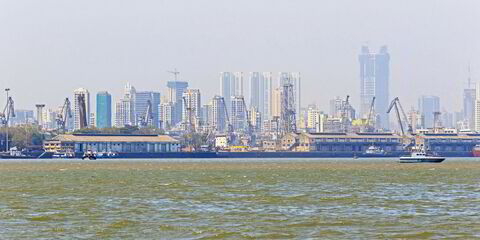Over the past few years, the world has been reminded of the importance of maritime transport for the functioning of supply chains, affordable consumer prices and the delivery of essential goods.
The impact of the pandemic on the maritime supply chain has put to test the ability of maritime transport and logistics to ensure the efficient flow of global trade. This has affected the geography of trade, and at the same time, the shifts in the geography of trade also have a bearing on shipping routes and services.
In the long term, we have seen overall positive developments: the amount of maritime cargo shipped every year for each one of us inhabitants of the world doubled from 0.7 tonnes to 1.4 tonnes per person between 1970 and today.
The share of developing countries’ maritime import volumes went up from under 18% in 1970, to over 60% in the 2020s; developing countries have embraced and benefited from containerisation; in 1980, the general cargo ship tonnage was 11 times bigger than the container shipping tonnage, while today the container shipping fleet is almost four times bigger than the general cargo fleet; transport costs and inventory holding expenditures have decreased over time, and trade efficiency has gone up.
But then came the pandemic-induced supply chain crisis. We can clearly discern the negative impacts of the crisis, and we at Unctad are currently assessing the extent to which some of the changes we see imply a shift away from the early long-term trends, or if they are just an interruption, which will revert back to the previous longer-term positive trends.
So, what happened? First, the supply of port, shipping and intermodal transport services slowed down following lockdowns, social distancing, staff absences, the need for additional controls and so on. As a result, container ships spent about 20% longer in ports by the end of 2021 compared with pre-pandemic levels.
Second, the demand for containerised goods trade did not slow down, as one might have initially expected in view of the economic downturn. Rather, in some key markets, demand went up because of economic stimulus packages and a shift of consumer spending from services to manufactured goods, easily ordered on e-commerce platforms, but still requiring physical production and shipping.
The combination of these two shifts led to an increase in freight rates and lower shipping connectivity, especially in many smaller and developing markets. It was shocking to see how congestion in some ports, a ship stuck in the Suez Canal or lockdowns in other ports, have led to rapid rises in shipping costs and a collapse of networks in various corners of the world. The crisis led to historically low schedule reliability, unprecedented port congestion, delays, additional surcharges, vessel rerouting and redeployment.
But just as container freight rates surged when demand went up and supply capacity went down, we now see container freight rates plummet, as supply capacity is restored but the global economy is slowing down.
Looking ahead
The crisis induced by the Covid-19 pandemic was compounded by other developments affecting maritime transport, including the energy transition and climate urgency, the war in Ukraine, strikes in the port sector and other political developments. All this was happening while the container shipping sector has been consolidating horizontally through mergers and acquisitions, and shipping carriers were pursuing vertical integration by investing in terminal operations and other logistics services.
Future freight rates and vessel supply will be further impacted by the need to comply with new and forthcoming regulations, including those of the International Maritime Organization, aimed at reducing carbon emissions from shipping.
Although freight and charter rates have been declining, it is unlikely that they will return to pre-Covid levels soon. The positive long-term trends in international trade and global value chains would not have been possible without continued improvements in maritime logistics services. By the same token, if the real costs of shipping were to remain elevated, it should be expected that global trade growth would slow down and distances between trading partners decrease.
What should be done?
Risks and uncertainty remain high for global supply chain operations. Attempts to shorten supply chains and to diversify suppliers can have a significant impact on global value chains and their underlying transport and distribution networks. Traders and policymakers will need to prepare for a future where the maritime transport landscape looks different and where shipping costs may be more costly and more volatile than in the past.
The supply chain crisis and several other wake-up calls — such as the temporary closure of the Suez Canal, seafarers’ predicament during the pandemic, and the war in Ukraine — combined with more volatility and less schedule reliability, call for shippers and governments to invest in the resilience of logistics operations.
Beyond the recent and ongoing disruptions, the shipping industry and its clients must also prepare for the energy transition necessitated by the need to significantly reduce greenhouse emissions. This transition entails a high degree of uncertainty about future fuels, vessel types, and impacts on shipping services and networks.
So here are five key areas for action:
First: make maritime transport and seaports resilient to multiple and simultaneously occurring shocks. To achieve this, maritime logistics providers and governments need to invest in adequate infrastructure, services and skills.
Second: ensure competition and options for diversification. Counting on more suppliers — be it for merchandise goods or for port and shipping services — can help to reduce risks and enhance supply chain resilience. Strong national competition authorities, in cooperation with their international counterparts, with effective monitoring of maritime transport markets can help ensure that shippers can choose among different transport service providers.
Third: invest in trade facilitation and digitalisation. During the pandemic, inefficiencies of logistics systems were revealed at great cost. This adds pressure to further reform and increases investments in digitalisation, e-documents, automation, and other trade and transport facilitation measures.
Fourth: dampen shocks through regional trade agreements and logistics cooperation, to supplement global and multilateral solutions. Intra-regional trade tends to be less affected by volatile international shipping costs, logistics disruptions and global political frictions. Many trade facilitation measures involve close cooperation among neighbouring countries and regional partners. Regional markets for transport services can also help reduce inefficiencies.
Fifth: aim for a just transition towards low-carbon shipping. The revenue that could potentially be generated through setting a price on carbon emissions from shipping should also support developing countries, especially the most vulnerable, to absorb the transition costs and fund climate change adaptation and mitigation measures during the process of decarbonisation.
As so often, in a crisis also lie opportunities. While the supply chain crisis has had a measurable negative impact on connectivity and led to higher prices, it also reminded us of the importance of investing in sustainable long-term solutions for more resilience.
Shamika N Sirimanne, is the director, Division on Technology and Logistics at UNCTAD and Jan Hoffmann is head, trade logistics Branch, Division on Technology and Logistics, UNCTAD
Do you have an opinion to share? Email: news@tradewindsnews.com
(Copyright)






